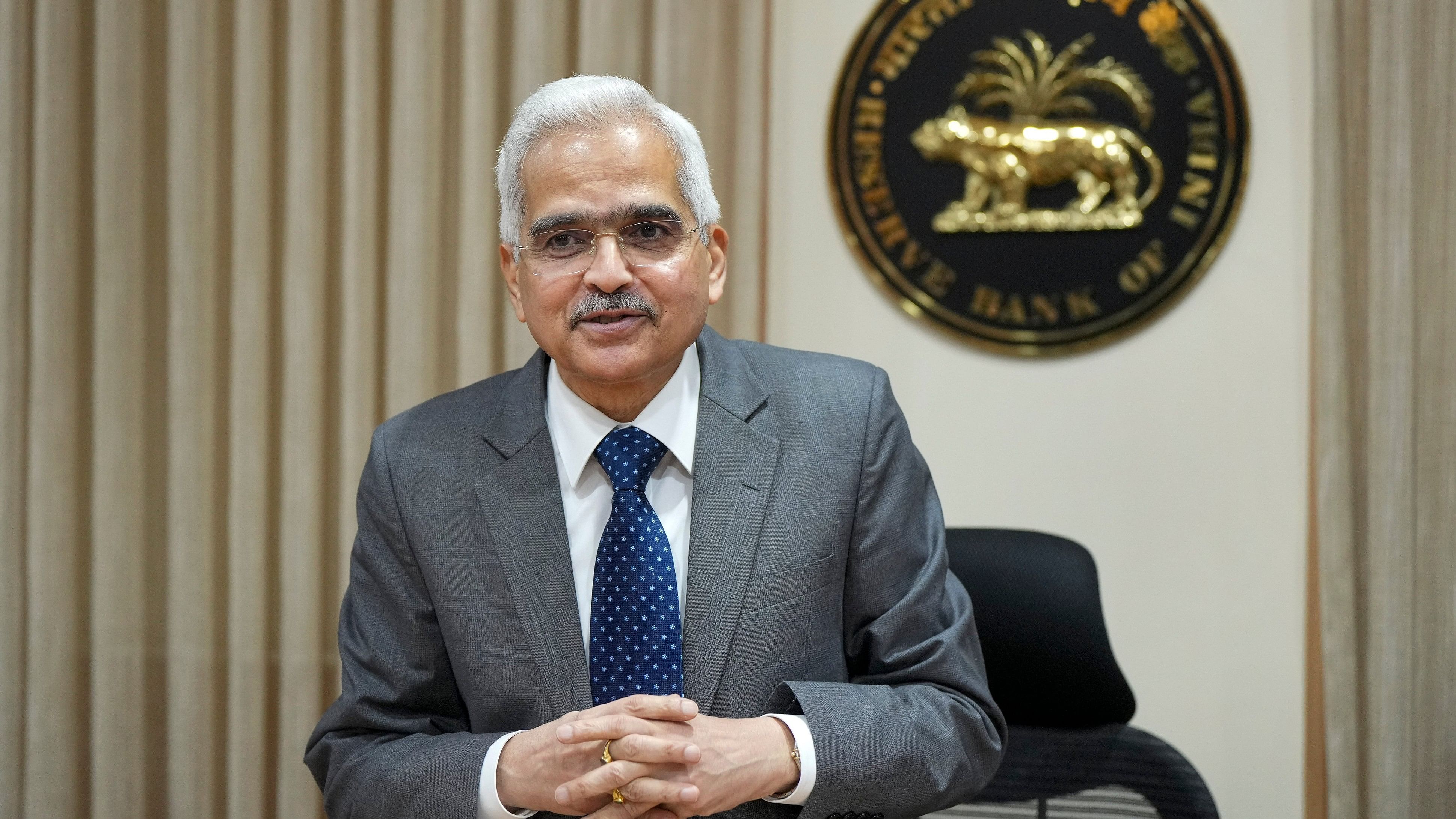
Reserve Bank of India (RBI) Governor Shaktikanta Das.
Credit: PTI Photo
New Delhi: The Reserve Bank of India (RBI) on Friday raised India’s economic growth forecast for the current financial year to 7.2 per cent from its earlier projection of 7 per cent and kept policy interest rates unchanged for the eighth time in a row, in line with market expectations.
The repo rate—the interest rate at which the RBI lends short-term funds to banks—remains unchanged at 6.5 per cent. The standing deposit facility rate has been kept unchanged at 6.25 per cent and the marginal standing facility (MSF) rate and the Bank Rate at 6.7 per cent.
This is the eighth consecutive bi-monthly monetary policy review in which the central bank has decided to keep key policy interest rates unchanged. The repo rate was last hiked in February 2023. Other rates also change in line with the repo rate.
According to RBI Governor Shaktikanta Das the six-member Monetary Policy Committee (MPC) decided to keep policy rates unchanged with a 4:2 majority.
The MPC also decided by a majority of 4 out of 6 members to remain focused on withdrawal of accommodation to ensure that inflation progressively aligns to the target, while supporting growth, Das said.
“RBI’s status quo on rates and stance was in line with market expectations, but the split in voting patterns clearly shows the increasing probability towards a pivot in the policies ahead,” said Upasna Bhardwaj, chief economist at Kotak Mahindra Bank.
“However, we believe the robust growth will give enough opportunity for the MPC to remain on a wait and watch mode until better clarity comes from monsoons and quality of expenditure from the Budget. We see room for stance change in the August policy with a plausible easing from the October meeting,” Bhardwaj added.
Aditi Nayar, chief economist at ICRA, expressed a similar view. “The status quo from the MPC was on expected lines, with only the voting change on the stance to 4:2 posing a surprise. Despite this, the 10 year G-sec yield remained above 7 per cent, with the actual start to the rate cut cycle appearing distant,” Nayar said.
Buoyed by the better-than-expected January-March quarter numbers, the central bank raised its GDP growth forecast for the financial year 2024-25 to 7.2 per cent from its earlier projection of 7 per cent announced in April. The RBI has pegged Q1 GDP growth at 7.3 per cent; Q2 at 7.2 per cent; Q3 at 7.3 per cent and Q4 at 7.2 per cent.
“Going forward, high-frequency indicators of domestic activity are showing resilience in 2024-25. The south-west monsoon is expected to be above normal, which augurs well for agriculture and rural demand. Coupled with sustained momentum in manufacturing and services activity, this should enable a revival in private consumption,” the RBI noted in its monetary policy statement.
It further noted that investment activity was likely to remain on track, with high capacity utilisation, healthy balance sheets of banks and corporates, the government’s continued thrust on infrastructure spending, and optimism in business sentiments.
“Improving world trade prospects could support external demand. Headwinds from geopolitical tensions, volatility in international commodity prices, and geoeconomic fragmentation, however, pose risks to the outlook,” it said.
Meanwhile, the RBI has kept its inflation projection for the current financial year unchanged at 4.5 per cent. For Q1 retail inflation is pegged at 4.9 per cent; Q2 at 3.8 per cent; Q3 at 4.6 per cent: and Q4 at 4.5 per cent. The CPI-based retail inflation stood at 5.4 per cent in 2023-24.
“According to our projections, the second quarter of 2024-25 is likely to see some correction in headline inflation, but this is likely to be one-off on account of favourable base effects and may reverse in the third quarter,” RBI Governor said.
“At the current juncture, the uncertainties related to the food price outlook warrant close monitoring, especially their spillover risks to headline inflation,” Das said.
He also reiterated the RBI’s commitment to bring down inflation to the 4 per cent target on a durable basis.